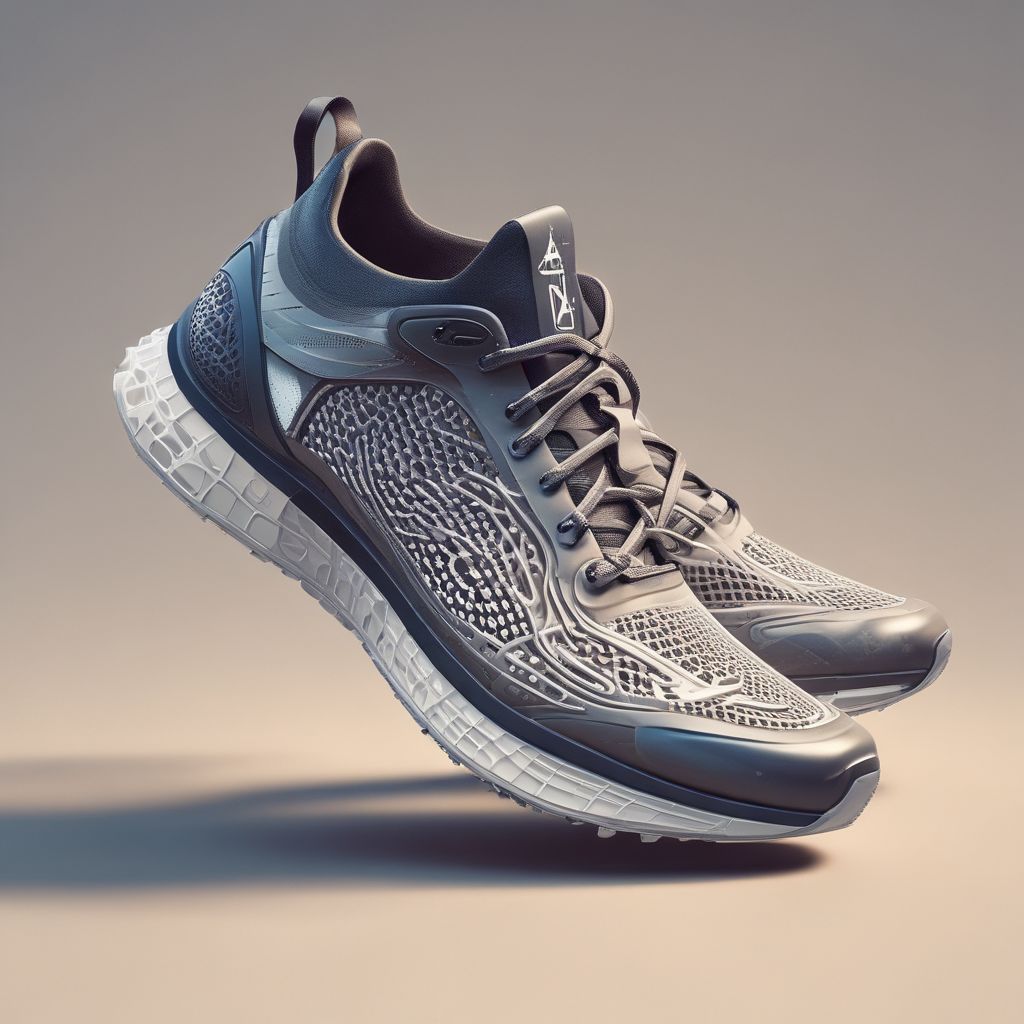Introduction: A New Era in Athletic Footwear
The world of athletics is undergoing a transformation, driven by innovations in materials science and digital manufacturing. At the forefront of this revolution are 3D-printed running shoes, which are redefining what it means to run faster, safer, and more efficiently. Traditional footwear design has long relied on molds and mass production, but 3D printing introduces a level of customization and precision previously unimaginable. This shift is not just about aesthetics or comfort—it’s about optimizing performance and reducing the risk of injuries for athletes at all levels.
The Technology Behind 3D-Printed Running Shoes
Materials and Manufacturing
3D-printed running shoes leverage advanced polymers and lattice structures to create lightweight, durable, and responsive designs. Unlike conventional shoes, which use multiple components glued together, 3D printing allows for seamless integration of materials. For example, Adidas’ Futurecraft 4D line uses a proprietary photopolymer called Lightweight Lattice, which is printed in a single process to form the midsole. This material offers energy return and cushioning tailored to the runner’s biomechanics.
Design Flexibility
The technology enables designers to experiment with complex geometries that would be impossible to achieve with traditional methods. Features like variable density foam, hollowed-out support structures, and intricate ventilation patterns can be precisely engineered. Nike’s Vaporfly series, though not fully 3D-printed, incorporates 3D-printed elements to enhance energy efficiency, showcasing the potential of this approach.
On-Demand Production
3D printing reduces waste by producing shoes only when needed. This contrasts with traditional manufacturing, which often results in excess inventory. Brands like Altra and Under Armour are exploring localized production to meet specific regional needs, cutting down on shipping costs and environmental impact.
Customization: Tailoring Every Step
Personalized Fit and Support
One of the most significant advantages of 3D-printed shoes is their ability to be customized to individual foot shapes and running styles. Using scans and data from motion analysis, manufacturers can create shoes that fit like a second skin. This reduces the risk of blisters, hotspots, and improper alignment, which are common in off-the-shelf models.
Adaptive Midsoles
3D printing allows for midsoles that adapt in real-time to the runner’s gait. For instance, Adidas has developed shoes with midsoles that adjust firmness based on terrain or user input. This adaptability ensures optimal shock absorption and propulsion, whether running on a track, trail, or treadmill.
Color and Style Options
Runners can now choose from a vast array of colors, patterns, and even textures for their shoes. Companies like Carbon offer online tools where users can design their own shoe aesthetics, combining functionality with personal expression. This level of customization is not only appealing but also practical for identifying shoes in crowded races or training sessions.
Performance Enhancements: Speed and Efficiency
Reduced Weight
3D-printed shoes are significantly lighter than traditional counterparts. The lattice structures used in printing minimize material without sacrificing support. A study by the University of Oregon found that runners using 3D-printed shoes experienced a 4% improvement in speed over standard models, attributed to reduced weight and enhanced energy transfer.
Improved Energy Return
The precise layering of materials in 3D-printed shoes allows for better energy return with each stride. This means less energy is lost during impact, translating to more efficient running. Brands like ASICS have integrated 3D-printed soles into their Gel-Kayano line, reporting a 12% increase in energy efficiency for long-distance runners.
Enhanced Traction and Stability
3D printing enables the creation of unique outsole patterns that maximize grip on various surfaces. For example, Brooks has used the technology to design shoes with micro-patterned soles that adapt to wet or dry conditions. This innovation provides better stability, especially during high-speed sprints or turns on uneven terrain.
Injury Prevention: A Game-Changer for Athletes
Biomechanical Optimization
By analyzing a runner’s biomechanics, 3D-printed shoes can be designed to correct imbalances or inefficiencies. This is particularly beneficial for athletes with pronation issues or previous injuries. Custom insoles and arch supports, printed as part of the shoe, ensure proper alignment and reduce strain on joints.
Impact Absorption
The ability to engineer midsoles with varying densities allows for targeted impact absorption. For instance, Reebok’s Floatride technology uses 3D-printed foam to cushion high-impact zones while maintaining responsiveness in others. This dual functionality helps prevent stress fractures and shin splints, common in long-distance running.
Real-Time Feedback Systems
Some 3D-printed shoes now include embedded sensors that provide real-time feedback on gait, pressure points, and stride efficiency. This data can be used to adjust training regimens or shoe design. Hexoskin has partnered with footwear brands to integrate such sensors, helping runners avoid overuse injuries by monitoring workload and recovery needs.
Sustainability: A Greener Approach to Footwear
Reduced Environmental Impact
Traditional shoe manufacturing generates significant waste, but




